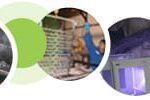When I was 19 years old I joined the Navy. I was assigned to work on submarines and spent much of my time in the service under water. Floating under the water in a hopefully airtight vessel will focus your mind on the importance of maintaining equipment. I was assigned to the Attack Submarine USS Snook (SSN-592). During my time onboard I was forced to become familiar with the “Submarine Safety” (SUBSAFE) program. In fact , the Navy taught me a few things. First, I learned the importance of check lists. Second, I was introduced to the need for standard operating procedures. Finally, I was … [Read more...]
What are you putting in your tank?
Have you ever heard the expression “the devil is in the details”? How many times do we think we have covered everything only to find out that some of the basic things get overlooked? One of the details that I find frequently overlooked is accounting for ALL components that make up a process tank. Standard Components in a Watt's Nickel Plating Bath For example, let’s take a look at a standard Watt’s nickel plating bath. The components that are commonly tested for are nickel metal, nickel sulfate, nickel chloride, boric acid, surface tension, carrier concentration, pH, and secondary … [Read more...]
What is the Timeline for GHS?
In an effort to promote standard criteria worldwide for classifying chemicals according to their health, physical and environmental hazards the Globally Harmonized System (GHS) of Classification and Labeling of Chemicals initiative was launched. Supporting this initiative, Osha has issued a Hazard Communication Standard Final Rule. This rule outlines changes for both chemical users and chemical producers to become compliant with the new GHS standards. Chemical users: Continue to update safety data sheets when new ones become available, provide training on the new label elements and … [Read more...]
Water and Your Plating Process
When it comes to cleaning and plating, there is one element which affects every single bath. This substance often makes up well over half of each tank, and we largely ignore it. That’s right, I’m talking about water. We put it in every bath, but pay no attention to what kind of water we have and what impact it will make. So let’s start at the beginning to understand how water effects the plating process. Types of Water That’s right; there are multiple types of water. These can be summarized into Hard, Soft, and Purified. Hard water is characterized by a high mineral content. Oftentimes, … [Read more...]
Conitinuous Learning in the Plating Industry
With more than 20 years in the plating industry I was surprised by how many insights and new pieces of information I picked up at the recent CEF course sponsored by Asterion in Indianapolis, IN. Here are just two of the applications regarding fixtures which were new to me. As I have talked with other industry "old timers" this was new information for them as well. I thought I'd share them and encourage you to attend the next CEF course sponsored by Asterion next year, you just might learn something to save your shop thousands of dollars. Barrel design: Traditionally it has been … [Read more...]
Basic Cleaning Fundamentals
Here is a simple truth “Nothing gets Plated until it gets Cleaned” Despite this simple truth, cleaning is often a neglected part of the metal finishing process. Here are some basic principles in metal preparation to follow to help you determine how well prepared the parts are in subsequent plating or finishing operations. Soak Cleaning Fundamentals Soak cleaners are used in simple tanks in which parts are immersed and then left to sit for a period of time. Typically soak cleaners are controlled by time, temperature and concentration. Used properly, soak cleaners should remove all of the … [Read more...]
Chromate Conversion Coatings
Zinc is typically used for the electrodeposited coating for iron and steel when prevention of atmospheric corrosion is the primary objective. However without a subsequent treatment, typically chromate, electrodeposited zinc becomes dull and grey and will quickly develop white corrosion products after exposure to air. Chromate conversion coatings impart both an aesthetically pleasing finish as well as varying degrees of corrosion protection. The use of Chrome VI in the conversion coatings as the passivation agent for zinc deposits are endowed with numerous advantages. These include: High … [Read more...]
